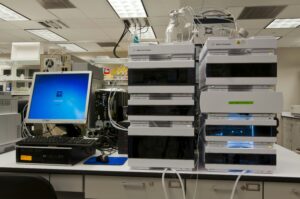
For years, tech specialist Kat Milner endured debilitating pain in her right hand, a condition that seemed to age her prematurely. At just 48, she awoke each morning to a sharp, throbbing ache, often radiating from her thumb to her index finger, making even the simplest tasks feel insurmountable. Typing at work set her hand ablaze, and crocheting, once a beloved pastime, became unbearable. Even mundane activities like holding a mug or twisting a jar lid could send a bolt of pain so intense it brought tears to her eyes.
‘I started buying all these gadgets to help me open things and I thought, “This is ridiculous.” I felt like a little old lady,’ Kat, now 58 and the owner of Simplify Your Tech, told the Daily Mail. The pain, which had begun as a dull ache, quietly grew into daily agony, eroding her strength and instilling fear about her future. ‘I was working in administration and typing all day. I remember coming home and thinking, “How am I going to keep working if this keeps getting worse?” Everything hurt.’
The Struggle for Relief
The pain had insidiously crept into Kat’s life about a decade ago. Initially dismissing it as overuse, she soon found the flare-ups impossible to ignore. Writing, washing dishes, even the weight of a blanket could trigger excruciating discomfort. ‘It felt like it was burning. I remember looking around the room and thinking my bed must have caught fire. That is how bad it felt.’
Over the years, Kat tried everything her doctors recommended. Pain relief medication, capsaicin cream, arthritis medication, and even two rounds of cortisone injections were prescribed. ‘The first cortisone shot lasted about a year so I thought, “Great, this is it.” The second one lasted maybe two months. It was so frustrating, especially because those injections really hurt.’ Yet, nothing offered long-term relief, and the emotional toll began to mount. ‘It becomes exhausting. You start to wonder if this is just how you will live from now on. There were times when I felt really low.’
A Chance Discovery
The turning point came unexpectedly during a visit with her husband Paul to his physiotherapy appointment for scoliosis and chronic back pain. As the physiotherapist explained a treatment called dry needling, Kat casually mentioned her hand. ‘I think I was having a flare-up that day and I said something like, “I should probably have you try that on my hand.” She asked what was going on and I told her that nothing was helping.’
The physiotherapist listened, examined her hand, and suggested Kat book an appointment. With little left to lose, Kat agreed. ‘I had tried so many things that didn’t work. But I had acupuncture years ago so I had some idea of what needling was like. I was open to trying anything.’
Understanding Dry Needling
Dry needling is a technique used by qualified physiotherapists in Australia to release tight muscles, reduce pain, and improve movement. It involves inserting very thin, sterile needles into trigger points or irritated areas within the muscles or connective tissue. Unlike acupuncture, which is based on traditional Chinese medicine, dry needling is rooted in modern anatomical and neurophysiological science.
In Australia, dry needling is performed by physiotherapists, osteopaths, and some chiropractors who have completed accredited training. A practitioner should be registered with AHPRA, use single-use sterile needles, and have specific post-graduate certification in dry needling.
The Impact of Dry Needling
During Kat’s first session, the physiotherapist inserted several very fine needles directly into her swollen and painful joints. ‘There is this little ping when she hits the right spot. It’s not pleasant but in a weird way it feels like something is being interrupted.’ Kat walked out expecting nothing, but something extraordinary happened. ‘My husband took my hand as we left and I suddenly realized it didn’t hurt. Normally even the slightest pull or movement would send pain shooting through me. I remember saying, “Hey, it doesn’t hurt.” I couldn’t believe it.’
Kat continued with the dry needling. Sometimes her hand would feel a little tender after a session, but once the mild soreness faded, she felt she could do almost anything again. ‘I had a treatment yesterday and now I can wash dishes, open bottles, and use my hand normally. Before, even turning a bottle lid would make me yelp.’
Dry needling did more than ease pain; it restored Kat’s independence. ‘I love my husband and he is always willing to help, but I lived alone for a long time. I want to know that I can still take care of myself. Being able to do things again makes me feel independent and capable. It is huge.’
Expert Opinions on Dry Needling
According to the Australian Physiotherapy Association and clinical guidance across major physio networks:
- Dry needling may help reduce joint-related pain caused by arthritis by releasing tight surrounding muscles and interrupting pain signals.
- It is often used alongside hands-on physiotherapy, joint mobilisation, and strengthening exercises.
- It is considered safe when performed by a trained practitioner using sterile, single-use needles.
- Unlike corticosteroid injections, dry needling does not have limits on how frequently it can be performed.
- Results vary between individuals, but some people experience relief immediately after treatment.
- It is not a cure for arthritis but may reduce symptoms enough to improve daily life.
Looking Ahead
Kat’s treatments now last several months at a time, provided she avoids overdoing it. When the pain starts to return, she knows it is time to book in again. ‘If I bump my thumb on a glass while washing it and feel that old familiar pain, I know it’s time.’ Unlike medications and cortisone shots, there is no limit to how often she can have dry needling. ‘That is one of the best things. It’s not like a drug where you have to worry about long-term damage. I could have it every week if I needed it.’
Her physiotherapist also provides occasional adjustments and recommends hand-strengthening exercises, which help support the joints between treatments. For Kat, the relief has been life-changing. ‘I tell people, go to a physio that does dry needling. It is a gift from God. I hope my physio never retires!’





